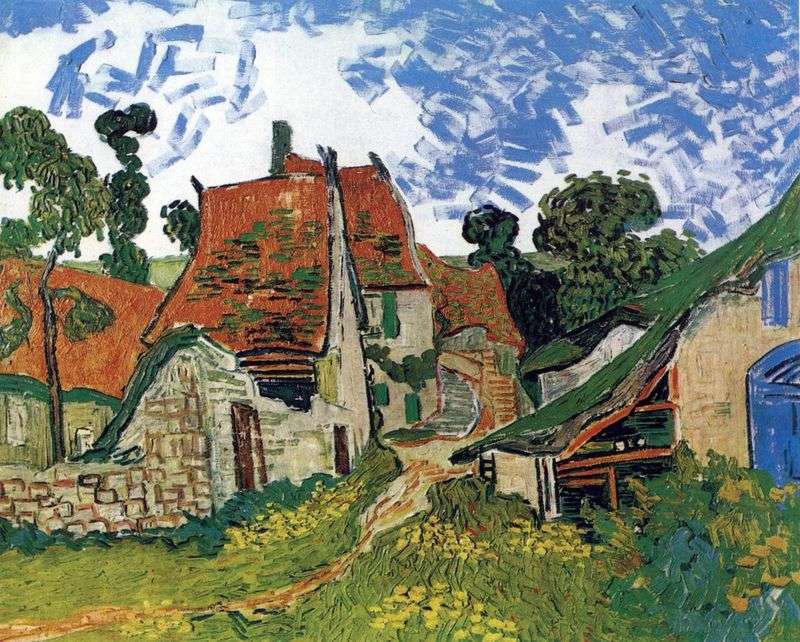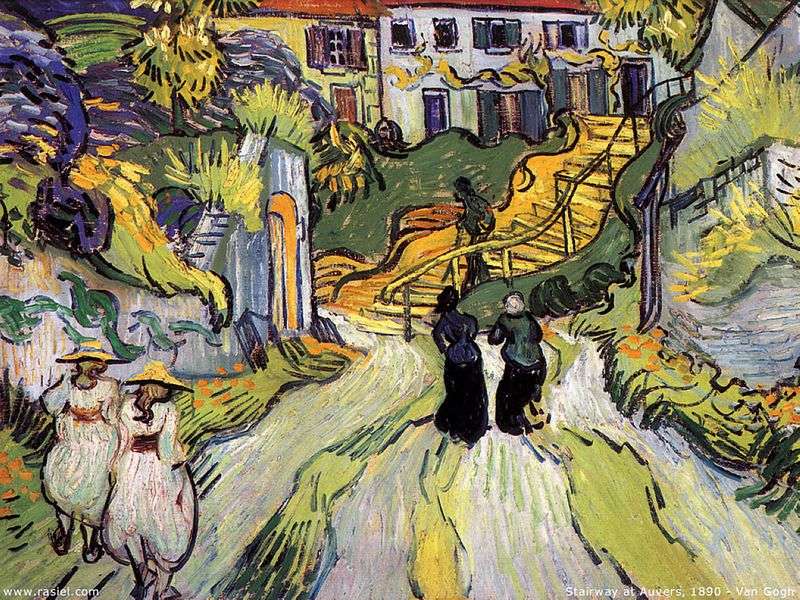
The picturesque canvas “Street in Auvers” was written in 1890 and is currently stored in the collections of the Ateneum Art Museum in Helsinki.
The painting depicts the landscape of the French street in Over. This landscape has a strong emotional impact. And, it would seem, there is nothing unusual in the composition of the canvas. The maximum originality of the canvas is actually how the main artistic idea is embodied.
For a picture contrasts, sharp distinctions of color, and besides, a bright, intensive contour, open, practically without semitones and shades, colors are characteristic.
It seems that the smears are dealt carelessly, abruptly, soon. This phenomenon, in turn, gives rise to a sense of the continuous dynamics of the stroke, the modification of the images, the shaking of silhouettes.
Contrast colors in the picture are red, green, white, blue and outline black.
The sky is spelled out like jerks, and not even drawn, but barely marked. Nevertheless, the dynamics of the stroke, through which the sky is drawn, sets the emotion of excitement, the continuous movement of air and clouds.
A few more decorative and detailed look images of houses, roads. The artist rejects an extremely realistic image, he seeks to convey something more than a cast of reality. He is interested in life itself, life forms as such, whatever they are. Under the painter’s brush, the world around him is transformed, modifying at all or splitting into uneven particles, contrasting and entering into a color or composition contradiction.
The use of contrast reception, apparently, is designed to reflect this contradiction, which is the basis of the work and fulfills the role of the main artistic task. And, perhaps, this contradiction, first and foremost, lived in the artist himself, gradually intensifying and destructuring not only his soul’s storehouse, but also partly those works that he, overcoming in every possible way his often difficult condition, created, regardless of everything, trusting only life and its so beautiful and so deceptive forms.
In the life of the same Van Gogh, images of pain, sadness and misunderstanding were increasingly prevailing. Vincent van Gogh passed away as an unrecognized genius, but, despite this, he became a great artist of his time forever.
 Street and stairs in the Over by Vincent Van Gogh
Street and stairs in the Over by Vincent Van Gogh Street with plane trees near Arley station by Vincent Van Gogh
Street with plane trees near Arley station by Vincent Van Gogh Night Cafe Terrace by Vincent Van Gogh
Night Cafe Terrace by Vincent Van Gogh Irises by Vincent Van Gogh
Irises by Vincent Van Gogh Park in Asnieres in spring by Vincent Van Gogh
Park in Asnieres in spring by Vincent Van Gogh Still life with lemons on a plate by Vincent Van Gogh
Still life with lemons on a plate by Vincent Van Gogh Boulders and Oak by Vincent Van Gogh
Boulders and Oak by Vincent Van Gogh Self-portrait in front of the easel by Vincent Van Gogh
Self-portrait in front of the easel by Vincent Van Gogh